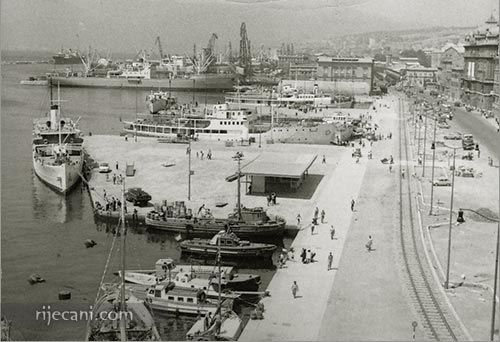This is what I see when I look out the window of my apartment in Rijeka:
A stunning sight, isn't it? Yet when I send a similar photo to my grandfather who's an experienced seafarer, his remarks always turn out to be nostalgic, longing for the age when the business was booming and you couldn't look out that same window without seeing the whole of Kvarner bay dotted with cargo ships. "Look, a ship!" I'd say, and he'd reply with "Huh, there used to be ten, twelve, fifteen on the horizon." Nowadays, I'm lucky if I catch one or two at any given time.
Rijeka houses the principal seaport in Croatia, and nostalgia aside, things are looking up again. In 2011, a contract was signed allowing for three partner companies to operate the container terminal, and the port is currently undergoing an expansion project that should be completed by 2030. However, we're still far away from that average 20th-century panorama.

I was reminded of this particular story by a Facebook post published earlier today by the Maritime and History Museum of the Croatian Littoral in Rijeka. On this day in 1954, Port of Rijeka was host to no less than 12 international cargo ships that were all simultaneously preparing for the next leg of their journeys. Belgrade was loading wood, while Vis was loading miscellaneous cargo. Santa Anna and Agios Nicolaos were unloading scrap metal, also unloading were Lošinj (coke), Pavole (phosphate), Petros Nomicos (grain), Richard D. Lyon (coal), Crna Gora, Pula, Korana and Exermont (misc.).
Not many photos of Rijeka Port taken in the 50s are to be found online, but there's a short documentary filmed after a script written by Veljko Rogić in 1955. The voiceover is in Croatian and there are no subtitles available, but it's still interesting to see images of harbour life more than 50 years ago:



